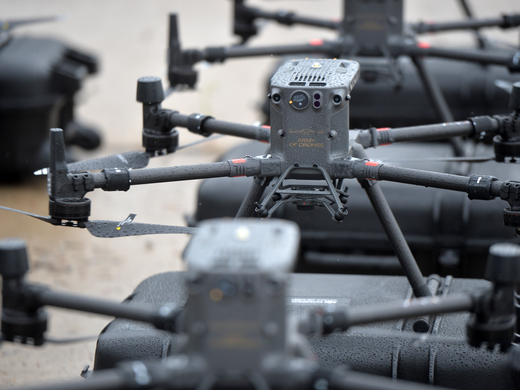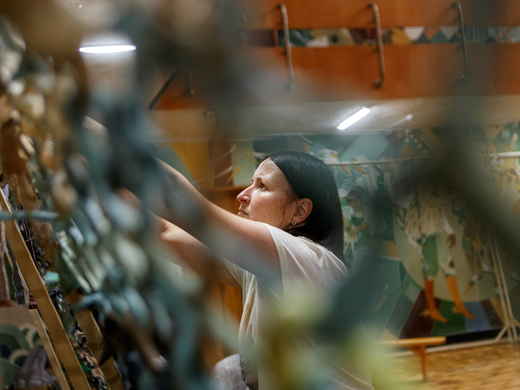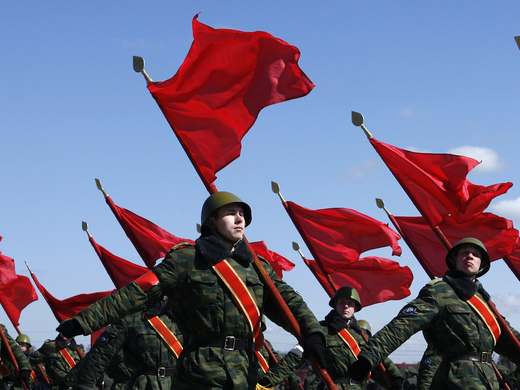It was a moment of levity during an otherwise serious discussion about public security in one of the hemisphere’s most insecure neighborhoods. I was sitting in the cramped, one-room offices of La différence, a Haitian NGO working to reduce violence in Port-au-Prince’s notorious Cité soleil neighborhood. I was asking my hosts about police-community relations, and posed the question of whether neighborhood residents considered policing as a public service. “In Haiti?", came the incredulous reply, and the entire room erupted in laughter.
This exchange speaks volumes about the current state of policing in Haiti, and represents an indictment of nearly two decades of on-again, off-again international efforts to build up a credible, professional Haitian National Police. While the HNP – the country’s most important national security institution after the country’s military was abolished in 1995 – is now more numerous, more capable, and less corrupt than ever, it continues to be perceived as an oppressive and even malevolent force in the very communities where it is needed most.
While all conflict-affected societies are unique, Haiti is perhaps more unique than most. Because Haiti has never experienced a conventional civil war, there is also no peace agreement, no uniformed combatants to be disarmed and reintegrated, and no formal reconciliation process underway. Instead, Haiti is more often characterized as ‘fragile’ rather than ‘post-conflict,’ while the key obstacles to long-term stabilization and ‘peace’ are weak institutions, deep inequality, and chronic, gang-related violence concentrated in a handful of neighborhoods – including Cité soleil – in and around the capital of Port-au-Prince. Indeed, one of many cruel ironies of the devastating earthquake that struck Haiti in January 2010 was that it liberated hundreds of gang leaders who had been systematically rounded up and incarcerated as part of an earlier effort to disrupt and dismantle gang infrastructure.
As a result, gang-driven violence has returned as the central component of Haiti’s current security problématique, and was a key factor in the decision of both the United States and Canada to issue warnings against travel to Haiti in late 2012. The ongoing struggle to stem urban violence in Haiti has also revealed a clear divide among various Haitian and international actors involved in this effort. On the one hand, innovative violence reduction initiatives – such as those organized by the Brazilian NGO Viva Rio or the Irish Aid group Concern Worldwide – have been informed by a social integration approach, on the assumption that dialogue, community development, and targeted incentives can help re-integrate current gang members and other vulnerable youth as productive members of the community. On the other hand, the HNP and their policing partners in MINUSTAH, the UN peacekeeping operation in Haiti, continue to pursue a conventional law enforcement approach, and oscillate between containment and crackdown, even as there is growing acknowledgement that heavy-handed enforcement operations alienate the very communities they purport to assist. While these different approaches may in theory represent both sides of a classic ‘carrot and stick’ approach, ongoing coordination failures have meant that inducements and punishments have rarely been combined with sufficient coherence to comprehensively re-frame the incentive structures faced by Haiti’s current and would-be gangsters.
The recent re-emergence of community policing on Haiti’s police reform agenda, however, offers an opportunity to bring these differing approaches into closer alignment. Centred on the notion of problem-solving policing and premised on the need to improve police-community relations, community policing represents a radical departure from the way policing has traditionally been practiced in Haiti. Despite this, the latest iteration of the HNP Development Plan calls for the institutionalization of community policing at the heart of the police service, while community policing modules are gradually being integrated into training for both new recruits and senior police managers. Two pilot projects on community policing are also expected to roll out in Port-au-Prince over the coming year. The first project draws on the experiences of Haitian-American officers from the New York Police Department, while the second – currently underway in the troubled neighborhood of Bel Air – represents perhaps the first systematic effort to link police reform to community violence reduction through the organization of community-police dialogues.
To be sure, the obstacles to community policing in Haiti are formidable, and the track record of community policing in other conflict-affected contexts is decidedly uneven. All too often, police managers have seen community policing more in terms of its intelligence-gathering potential and less as an ongoing exercise in police-community collaboration. Similarly, the de-centralization of authority implicit in community policing strategies often sits uncomfortably with rigid police hierarchies and top-down management practices. Despite this, the shift towards community policing in Haiti, however tentative, is already creating space for a genuine debate, especially within the HNP, about the role of police in society, and may open up practical possibilities for more coherent, sustainable responses to the ongoing challenge of urban violence. Over the longer term, the opportunities for dialogue across the police-community divide generated by a sustained community policing strategy may even render the notion of ‘policing as public service’ less alien, and less subject to derision, in the eyes of ordinary Haitians.


